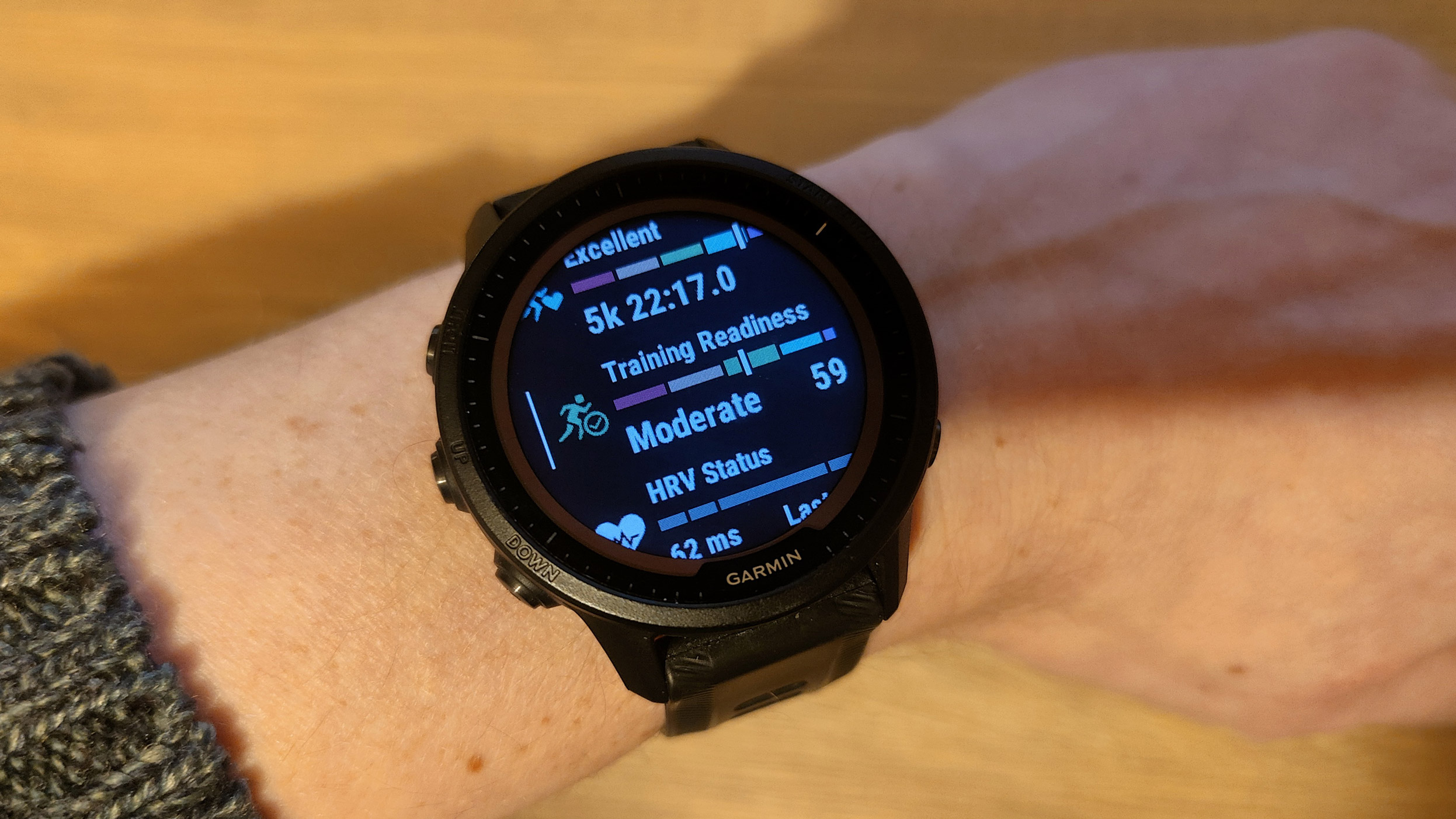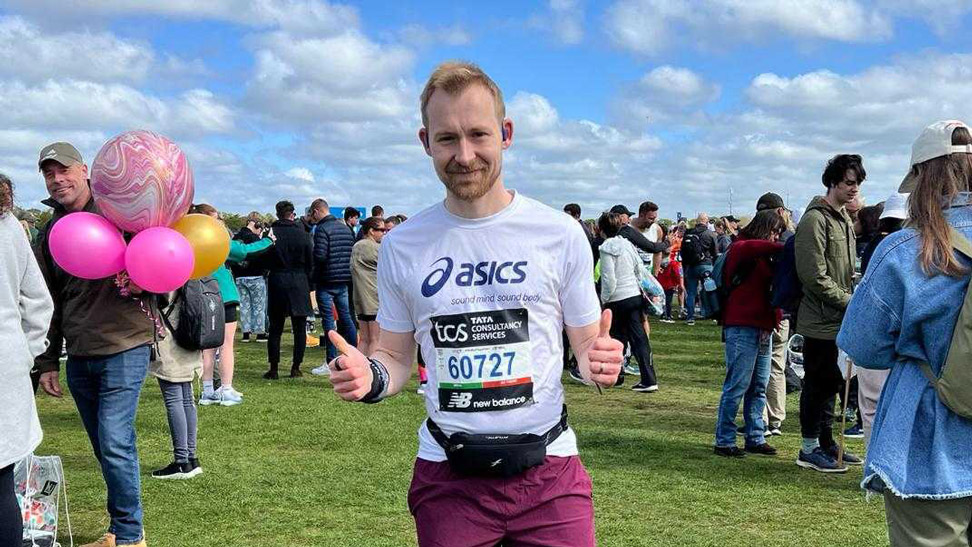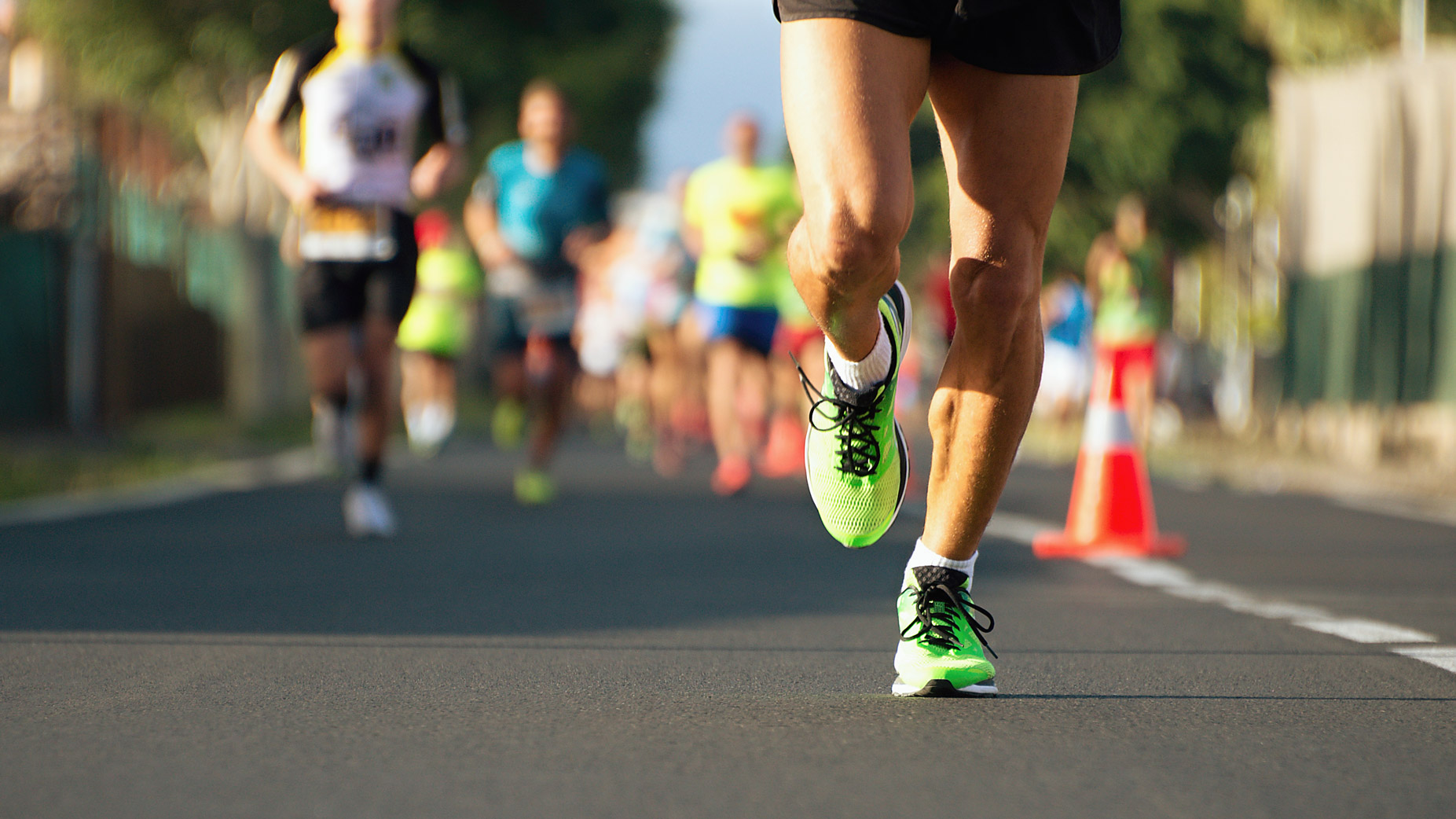I wish I was a better runner so I could use more of the features on my Garmin watch
And advanced running shoes, come to that

My job has its perks. When I ran my first marathon I was wearing a Garmin Forerunner 265 and sporting a pair of distinctly excellent super-shoes, the Nike Air Zoom Alphafly Next%2, both loaned to me by the respective brands for review purposes.
Those shoes are the same make and model that legendary marathon runner Eliud Kipchoge used in his ‘Breaking 2’ attempt to run a marathon in under two hours, a pair of split-sole carbon-plated shoes designed to be the fastest marathon shoe ever made.
When asked by a friend if the shoes helped, I said: “Honestly? I’m not sure. They’re supposed to make a big efficiency saving, but I don’t think I’m a good enough runner to matter”.
Sure enough, the following year, I came back to the marathon distance again and shaved four minutes off that time, wearing a pair of slower, squishier ASICS Gel-Nimbus 26 running shoes, to get a heartbreaking 4:00:54 personal best. I was right: the shoes had nothing to do with it.
I’m not a bad runner by any means. It’s very rare that a week goes by during which I don’t run, and I usually run multiple times a week in addition to doing other forms of training, such as strength and mobility. I’ve completed multiple marathons, trail runs, half-marathons and obstacle challenges, and I’m physically quite fit despite being a lifelong asthmatic.
By a layperson’s standards, I probably qualify as a ‘good’ runner. However, by any really good runner’s standards, I’m a hobbyist at best. If I was better, I’d have shaved another 55 seconds off my marathon PB and joined the exclusive (well, exclusive to me) sub-four-hour marathon club.

Just as I couldn’t make the most out of those shoes, I’m aware that there are some features on the smart devices I test, such as the best Garmin watches, that I really don’t make the most of. I look carefully for advanced running metrics whenever I review one of the best running watches, such as the Garmin Fenix 8, and make sure they’re in line with my regular readings from my Apple Watch Ultra 2.
Get daily insight, inspiration and deals in your inbox
Sign up for breaking news, reviews, opinion, top tech deals, and more.
However, I rarely make the most of the wealth of information at my disposal. Advanced metrics such as ground-contact time – the time your foot spends on the ground with each step during a run – are important to measure, but I never find myself pulling out these statistics and using them to conduct analysis on my gait.
It’s a shame, because there’s plenty to be gained by doing this; according to TrainingPeaks, shorter ground-contact time readings can contribute to overall speed and running performance. There are ways to improve this metric, such as switching from heel striking to midfoot striking and performing plyometric training to develop explosive power. In order to measure improvement, I’d need to analyze my ground-contact time improvements over a four-week or even three-month period.

Likewise with features such as my Hill Score, or Endurance Score, or stride length – all contain granular information that previously was only available to elite athletes, and which allow runners like me to improve like never before. However, there are now so many metrics to monitor and analyze, all of which are available on these super-premium running watches, that to take them all in seems a daunting task for a serious athlete, let alone a hobbyist runner who wants to go for a jog after work to unwind. I’ve got extremely powerful running tools at my fingertips, and they rarely get used because I mostly run for fun.
Maybe if I did take advantage of these tools I would be a better runner. My ‘cruising pace’ to enjoy a leisurely weekend 10km around my neighborhood has been stuck around five minutes, 35 seconds per kilometer for what feels like years, but for me it feels like the perfect amount of effort expended: fast enough to sweat, slow enough to enjoy the better part of an hour not plugged into a screen.
However, it’s probably time I really took a good hard look at my ground-contact time and stride-length metrics, to see if I can shave another minute off my marathon PB.
How do you use the metrics on your running watch? Do you ever pull out the really obscure stats and use them in your training? Drop a comment below, or email me at matt.evans@futurenet.com.
You might also like...

Matt is TechRadar's expert on all things fitness, wellness and wearable tech.
A former staffer at Men's Health, he holds a Master's Degree in journalism from Cardiff and has written for brands like Runner's World, Women's Health, Men's Fitness, LiveScience and Fit&Well on everything fitness tech, exercise, nutrition and mental wellbeing.
Matt's a keen runner, ex-kickboxer, not averse to the odd yoga flow, and insists everyone should stretch every morning. When he’s not training or writing about health and fitness, he can be found reading doorstop-thick fantasy books with lots of fictional maps in them.
You must confirm your public display name before commenting
Please logout and then login again, you will then be prompted to enter your display name.